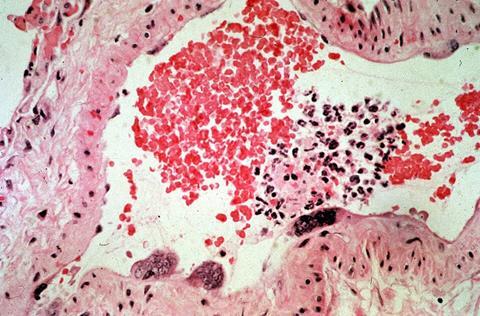Researchers at the Nanoscience Initiative at the Advanced Science Research Center at the CUNY Graduate Center (CUNY ASRC) have made a breakthrough in the fight against viral diseases. Their study, published in the journal Science Advances, offers a promising path toward the development of the world’s first broad-spectrum antiviral (BSA), which could be deployed against a wide range of deadly viruses, including future pandemic threats.

Unlike bacterial infections, which doctors often begin immediately treating with broad-spectrum antibiotics while they work to determine the specific bacteria, viral infections are treated with antivirals, which are narrowly targeted and effective against only a small set of related viruses.
“This lack of treatments can leave populations vulnerable for years, while vaccines and therapeutics are being developed,” said Principal Investigator Adam Braunschweig, a Nanoscience Initiative professor at CUNY ASRC and a Chemistry and Biochemistry professor at Hunter College.
Sugar molecules
Braunschweig’s team set out to address this global health challenge by targeting a shared feature found on the surface of many viruses: viral envelope glycans—sugar molecules that are structurally conserved across unrelated viral families. These widely shared have until now remained an untapped target for antiviral drug development.
The researchers screened 57 synthetic carbohydrate receptors (SCRs), which are small molecules designed to bind to viral glycans. They identified four lead compounds that successfully blocked infection from seven different viruses across five unrelated families, including some of the world’s most dangerous pathogens: Ebola, Marburg, Nipah, Hendra, SARS-CoV-1, and SARS-CoV-2.
Novel mechanism
In a critical test, one of the lead SCR compounds was used to treat mice infected with SARS-CoV-2. Ninety percent of the mice receiving the SCR survived, compared to none in the control group. Further analysis confirmed that the compounds work by binding to viral envelope glycans—a novel mechanism of action with potential applications not only for infectious diseases but also for cancer and immune disorders.
“This is the kind of antiviral tool the world urgently needs,” said Braunschweig. “If a new virus emerges tomorrow, we currently have nothing to deploy. These compounds offer the potential to be that first line of defense.”
The next phase of the team’s research will focus on advancing the most promising compounds into clinical trials.
This work was supported by the Army Research Office, National Institutes of Health, New York State Biodefense Commercialization Fund, Air Force Office of Scientific Research, and the COVID-19 High Performance Computing Consortium.







No comments yet